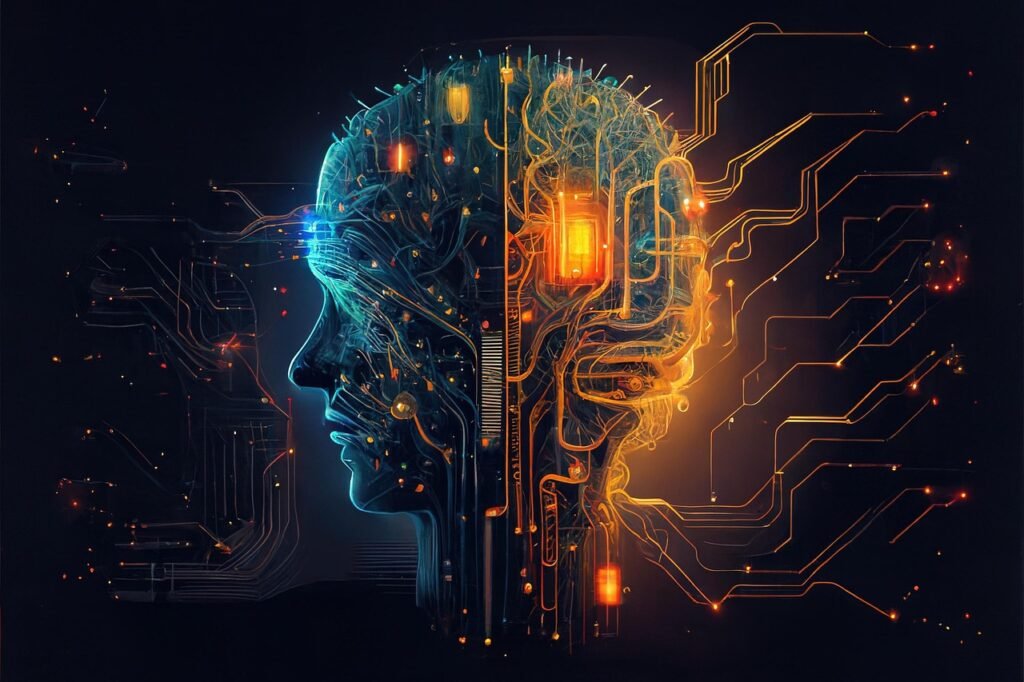Artificial Intelligence (AI) has rapidly moved from being a futuristic concept to a powerful technology reshaping industries, businesses, and daily life. From voice assistants like Siri and Alexa to complex data-driven platforms, artificial intelligence tools. are driving efficiency, automation, and innovation worldwide.
In this article, we’ll explore what AI tools are, their types, real-world applications, popular examples, and how they are revolutionizing multiple sectors.
What Are Artificial Intelligence Tools?
Artificial intelligence tools are software, applications, or platforms that use machine learning, deep learning, or natural language processing (NLP) to perform tasks that typically require human intelligence.
These tools help in:
- Automating repetitive work
- Analyzing large data sets
- Enhancing decision-making
- Improving customer experiences
- Driving innovation in multiple industries
Types of Artificial Intelligence Tools
AI tools are diverse, depending on their functions and applications. Below are the main categories:
1. Machine Learning Tools
- Focused on algorithms that allow computers to learn from data.
- Example: TensorFlow, Scikit-learn.
2. Natural Language Processing (NLP) Tools
- Understand, analyze, and generate human language.
- Example: ChatGPT, IBM Watson NLP.
3. Computer Vision Tools
- Enable machines to “see” and interpret images/videos.
- Example: OpenCV, Google Vision AI.
4. Robotic Process Automation (RPA) Tools
- Automate repetitive business tasks like data entry or reporting.
- Example: UiPath, Blue Prism.
5. Generative AI Tools
- Create new content (text, images, videos, music).
- Example: DALL·E, MidJourney, Jasper AI.
6. Predictive Analytics Tools
- Forecast outcomes based on data patterns.
- Example: RapidMiner, SAS.
Real-World Applications of AI Tools
Artificial intelligence tools are transforming industries in countless ways:
✅ Healthcare
- AI tools diagnose diseases, analyze X-rays, and even suggest treatments.
- Example: IBM Watson Health.
✅ Business & Finance
- Automating customer support with chatbots.
- Fraud detection in banking.
- Stock market predictions.
✅ Education
- AI tutors and personalized learning platforms.
- Tools for grading and curriculum planning.
✅ Marketing & Content Creation
- AI copywriting tools generate blogs, ads, and product descriptions.
- Example: Jasper AI, Copy.ai.
✅ Cybersecurity
- AI tools detect anomalies, phishing attacks, and malware faster.
- Example: Darktrace.
✅ Transportation
- Self-driving cars (Tesla Autopilot).
- Traffic optimization systems.
Top Artificial Intelligence Tools in 2025
Here’s a list of the most popular AI tools in 2025:
- ChatGPT (by OpenAI) – Conversational AI, content generation, and virtual assistance.
- Google Bard – Research, writing, and knowledge exploration.
- TensorFlow – Open-source machine learning framework.
- PyTorch – Deep learning platform widely used in research.
- UiPath – Robotic process automation tool.
- Jasper AI – Content creation and copywriting AI.
- Grammarly – AI-powered grammar correction and writing improvement.
- DALL·E & MidJourney – AI image-generation tools.
- Hugging Face – NLP and transformer-based AI model hub.
- RapidMiner – Predictive analytics and machine learning.
Benefits of Artificial Intelligence Tools
- Increased efficiency – Automates repetitive and time-consuming tasks.
- Data-driven decisions – Helps businesses analyze massive data sets.
- Personalization – Improves customer experience through personalized recommendations.
- Cost savings – Reduces human errors and saves operational costs.
- Innovation – Enables creativity in art, writing, and design.
Challenges of Using AI Tools
Despite benefits, AI adoption comes with challenges:
- Bias in algorithms – AI may reflect biased data.
- Job displacement – Automation could replace certain jobs.
- High cost of implementation – Advanced AI tools require investment.
- Privacy concerns – AI systems often deal with sensitive data.
- Lack of human judgment – AI lacks emotional intelligence and creativity in some areas.
Future of Artificial Intelligence Tools
By 2030, experts predict AI will:
- Be integrated into nearly every business process.
- Revolutionize industries like healthcare, agriculture, and education.
- Make personalized AI assistants common in households.
- Drive autonomous vehicles and smart cities.
- Create new job opportunities in AI development and ethics.
FAQs About Artificial Intelligence Tools
Q1: Can small businesses use AI tools?
Yes, many affordable AI tools like Grammarly, Jasper, and ChatGPT are designed for small businesses.
Q2: Which AI tool is best for students?
Tools like ChatGPT, Grammarly, and Google Bard help students with learning and writing.
Q3: Are AI tools safe to use?
Yes, but data privacy and ethical use must always be considered.
Q4: Can AI tools replace humans?
No, AI supports humans by automating tasks but cannot fully replace creativity, emotions, and ethical decision-making.
Conclusion
Artificial intelligence tools are no longer optional—they are essential for staying competitive in today’s digital era. From content writing and customer service to advanced healthcare solutions, these tools are changing the way we work and live.
Businesses and individuals who adopt AI early gain a significant advantage in productivity, creativity, and decision-making. As technology evolves, the potential of artificial intelligence. tools will only continue to grow, shaping a smarter, more efficient future for all.

